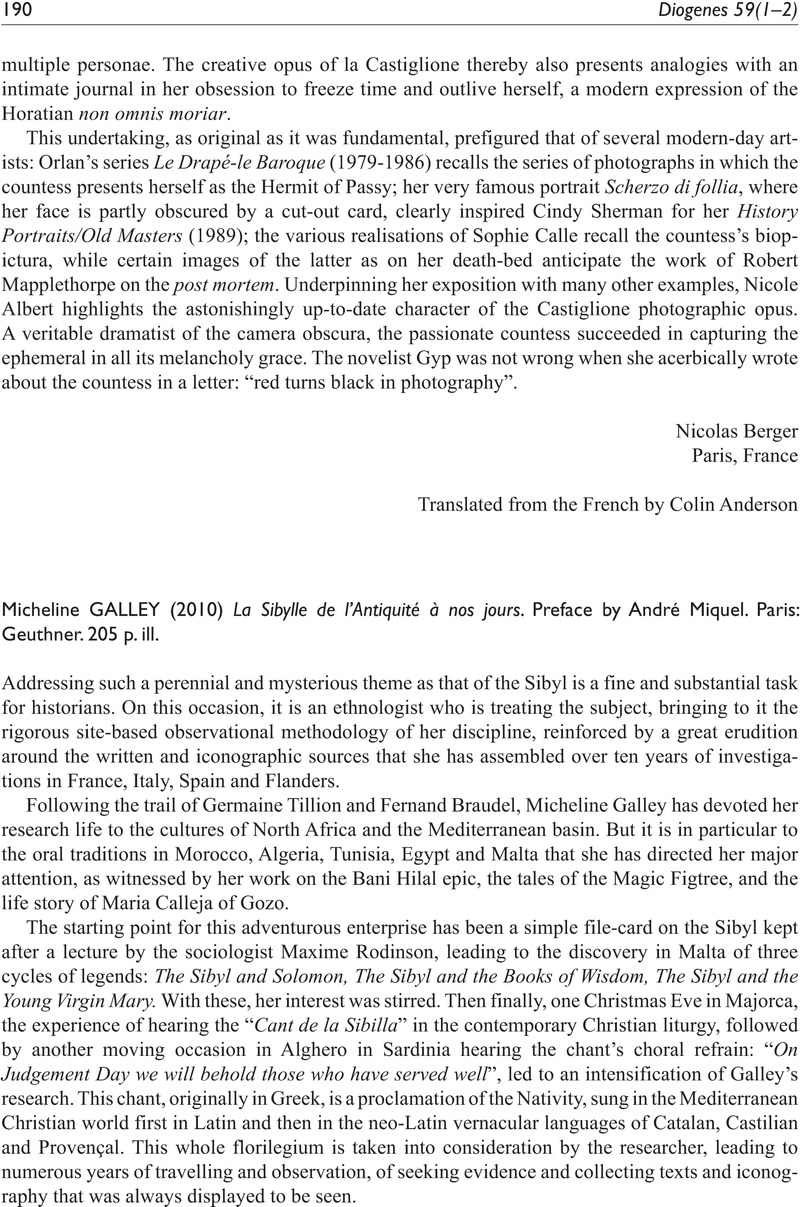No CrossRef data available.
Micheline Galley (2010) La Sibylle de l’Antiquité à nos jours. Preface by André Miquel. Paris: Geuthner. 205 p. ill.
Review products
Micheline Galley (2010) La Sibylle de l’Antiquité à nos jours. Preface by André Miquel. Paris: Geuthner. 205 p. ill.
Published online by Cambridge University Press: 01 January 2024
Abstract
An abstract is not available for this content so a preview has been provided. Please use the Get access link above for information on how to access this content.

Information
- Type
- Book Reviews
- Information
- Copyright
- Copyright © ICPHS 2013

